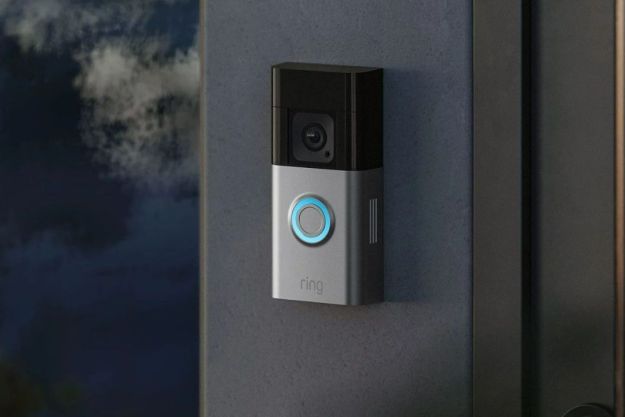Spotlight cameras are smaller, nimbler versions of motion sensor floodlights used to protect outside areas. While today’s security cams feature plenty of night vision features, activating a spotlight adds some extra illumination — and can frighten away unwanted guests, both human and animal.
Two of the most consumer-friendly, Wi-Fi-ready options are the Nest Cam Floodlight version and the recently-announced Ring Spotlight Cam Pro. Let’s pit these two against each other and see which comes out ahead!
Overall design and installation
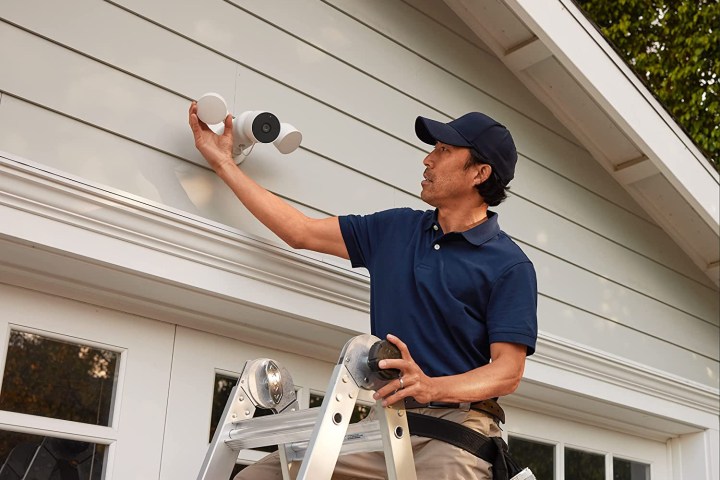
The Nest Cam with floodlights features a large, bold design that features two floodlights for maximum illumination over a large space — no matter how cold your winters get. The cam itself is positioned between the two lights, and all are mounted on a weighty base with a magnetic back panel made to attach to a wall. It’s sturdy and bulky. You’ll need the right space (the cam is around a foot wide), with room for a solid installation for the back panel. It’s no surprise that this cam is hardwired, too, so installation may take a little extra work.
The Ring Spotlight Cam Pro has a much more compact, mobile design. It’s battery-powered, so there’s no need for hardwiring. Instead of two separate floodlights, this cam has two LED panels on either side, which keeps the device slim but (as we’ll discuss later) reduces the area it can cover. It also has a built-in siren, which the Nest version doesn’t offer.
The Nest version is more suited for positioning above a garage or back porch for a broad view, while the Ring model’s illumination is for close quarters like a front porch or patio. But overall, the Ring Spotlight is going to be a lot easier for most users to set up quickly.
Winner: Ring Spotlight Cam Pro
Camera features
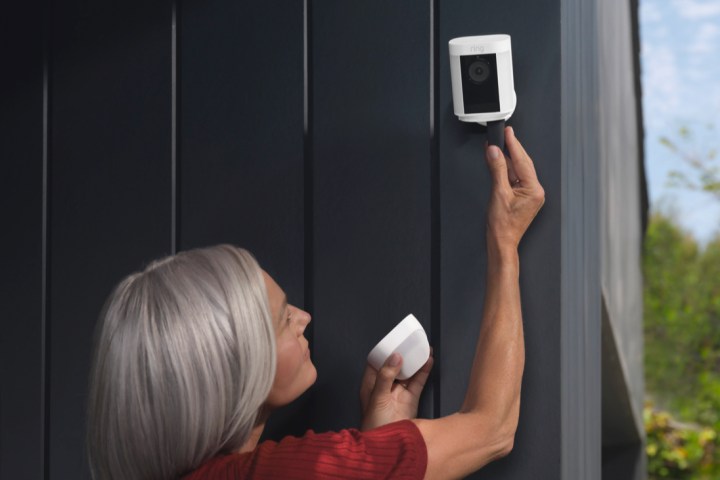
Both models sport some of the latest security camera technology. On the Nest version, that means a 2-megapixel
The Ring Cam uses a 1080p
These cameras are quite similar, but the Ring’s version is a slightly newer model with nods to additional technology that give it a small edge.
Winner: Ring Spotlight Cam Pro
Spotlight features
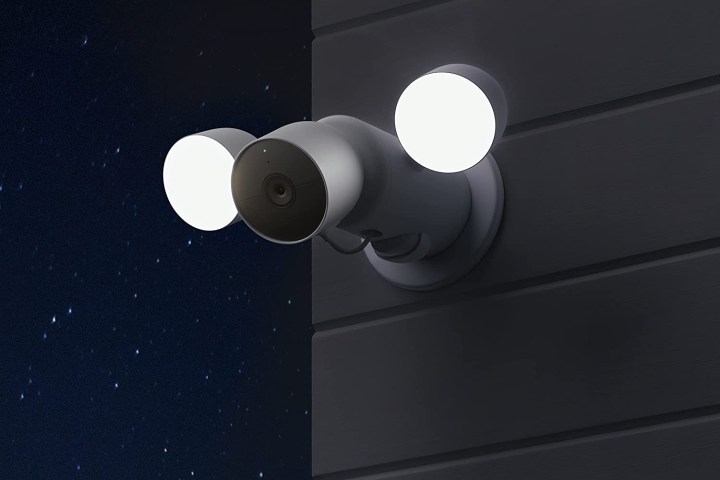
If you’re paying extra for a spotlight cam, you’ll want a spotlight that’s worth it. The large design of the Nest Cam Floodlight model has a serious advantage here, with two large, bright floodlights that offer adjustable brightness and can go all the way to 2,400 lumens at 4,000L color temperature. That’s enough to light up large lots and similar areas without trouble, but there’s more: The floodlights can also switch to different colors if you want and even act as indicators for other Google Home alerts you may have.
Ring’s LED panels are useful and have some adjustment options, but they can’t really compare to Nest’s powerful floodlights when it comes to coverage or customization options.
Winner: Nest Cam with Floodlight
Smart features and app controls

The Nest cam requires management via the Google Home app, where you’ll be able to control and view it remotely, get a variety of notifications, and connect it to routines like turning it off when you get home after work. However, it’s one of the few Nest devices to support both
The Ring Spotlight Cam Pro, on the other hand, works via the Ring app and integrates only with the
Winner: Nest Cam with Floodlight
Plans and video storage

When looking at smart security cameras, you always need to look at video storage and what plans offer because a subscription can drastically affect costs and may be necessary to use a variety of important features.
For Nest, that means the Nest Aware program at $6 per month up to $12. Aware adds the ability to recognize familiar faces and sounds and gives you up to 60 days of recorded video history (or options to enable 24/7 video history). It also adds the ability to call emergency services from the app. Without Nest Aware, you still get three hours of cloud video storage to hold recorded video for free, which is more than most security cams offer.
Ring relies on the Ring Protect plan starting at $4 per month, up to $10 per month. Protect plans add recorded video storage for up to 180 days, an option to enroll in professional monitoring, and extended warranty options. However, there is no free video storage option at all, so without the plan, you’re stuck with livestreaming only. The professional monitoring addition is great for those who want it, but the absence of any free options is a tough sell.
Winner: Nest Cam with Floodlight
Pricing
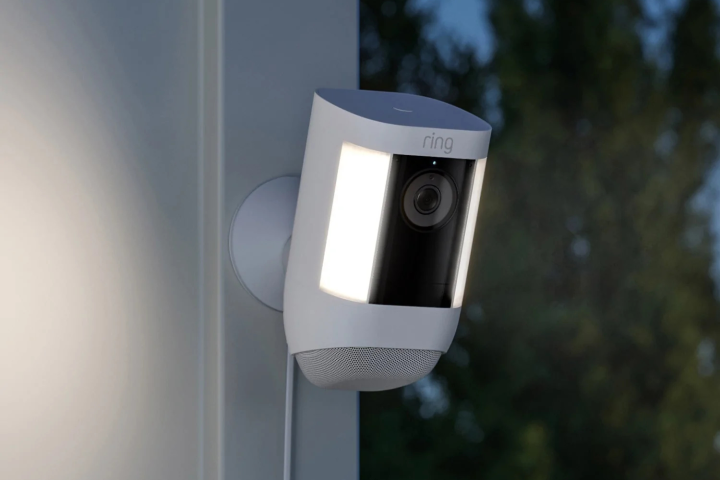
The Nest Cam with Floodlight lists at $280, while the Ring Spotlight Cam Pro is available, as of October 26, 2022, for $229. That’s pretty straightforward, although both may be subject to discounts and bundles for things like Amazon Prime Day and Black Friday weekend.
Winner: Ring Spotlight Cam Pro
Which spotlight cam is worth your time?
With its simple do-it-yourself (DIY) installation, battery power, and compact design, we’re giving a slight edge to the Ring Spotlight Cam Pro in most situations. However, Nest brings plenty to the table with its excellent floodlight coverage and customization, along with superior voice assistant integration (and better no-subscription options). It’s definitely worth considering if you’ve got the space and are willing to pay a higher initial cost.
Editors' Recommendations
- Ring Battery Doorbell Pro vs. Aqara G4: Which is the better video doorbell?
- Blink Mini 2 vs. Nest Cam (Indoor): Which is the better affordable security camera?
- Does the Ring Stick Up Cam Pro rotate or swivel?
- Ring Battery Doorbell Pro vs. Nest Doorbell: Which is the better video doorbell?
- Ring Battery Doorbell Pro vs. Ring Battery Doorbell Plus: Is the new Pro model worth it?


